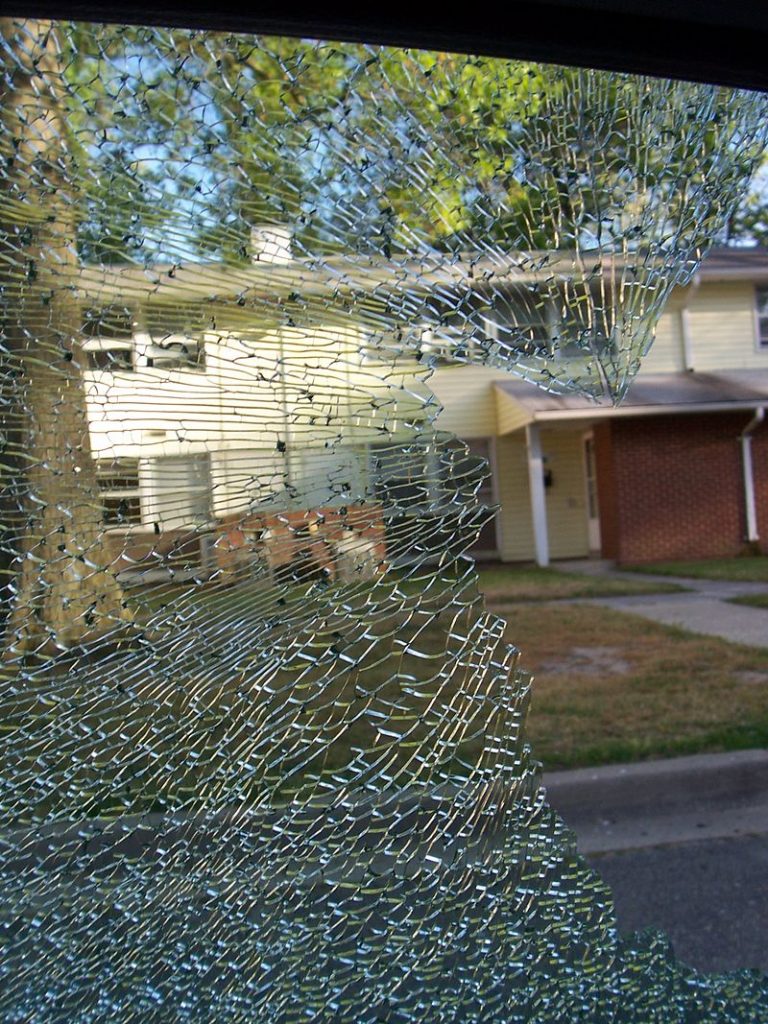Toughened glass is used when strength, thermal resistance, and safety are important considerations.
- 1/8″ – used in storm windows, picture frames, end tables, insulated units, etc.
- 3/16″ – used for small table tops, insulated units, small shelves, etc.
- 1/4″ – used in table tops (as protective covering), insulated units, single-pane windows, lightweight shelves, hand rails, framed shower doors, etc.
- 3/8″ – used in shower doors, table tops, glass walls, glass partitions, hand rails, door lights, etc.
- 1/2″ – used for shower doors, table tops, glass walls, glass partitions, hand rails, etc.
- 3/4″ – used for glass doors, mall fronts, table tops, glass floors, etc.

Automobiles
The most commonly encountered tempered glass is that used for side and rear windows in automobiles.A shattered driver’s side window reveals small fragments that still cling together.
It is used for its characteristic of shattering into small cubes rather than large shards and is sometimes referred to as safety glass in this context. (The windscreen or windshield is instead made of laminated glass, which will not shatter when broken.)
Buildings and structures
Toughened glass is also used in buildings for unframed assemblies (such as frameless glass doors), structurally loaded applications, and any other application that would become dangerous in the event of human impact. Tempered and heat strengthened glass can be three to seven times stronger than annealed glass.
[1] Building codes in the United States require tempered or laminated glass in several situations including some skylights,
[2] near doorways and stairways, large windows, windows which extend close to floor level, sliding doors, elevators, fire department access panels, and near swimming pools.
Food service
“Rim-tempered” indicates that a limited area, such as the rim of the glass or plate, is tempered and is popular in food service. However, there are also specialist manufacturers that offer a fully tempered/toughened drinkware solution that can bring increased benefits in the form of strength and thermal shock resistance. In some countries these products are specified in venues that require increased performance levels or have a requirement for a safer glass due to intense usage.
Tempered glass has also seen increased usage in bars and pubs, particularly in the United Kingdom and Australia, to prevent broken glass being used as a weapon.
Cooking and baking
Some forms of tempered glass are used for cooking and baking. Manufacturers and brands include Glasslock, Pyrex, Corelle, and Arc International.
Mobile Devices
Most touchscreen mobile devices use some form of toughened glass (such as Corning’s Gorilla Glass[3][better source needed]), as do some aftermarket screen protectors for these devices.






